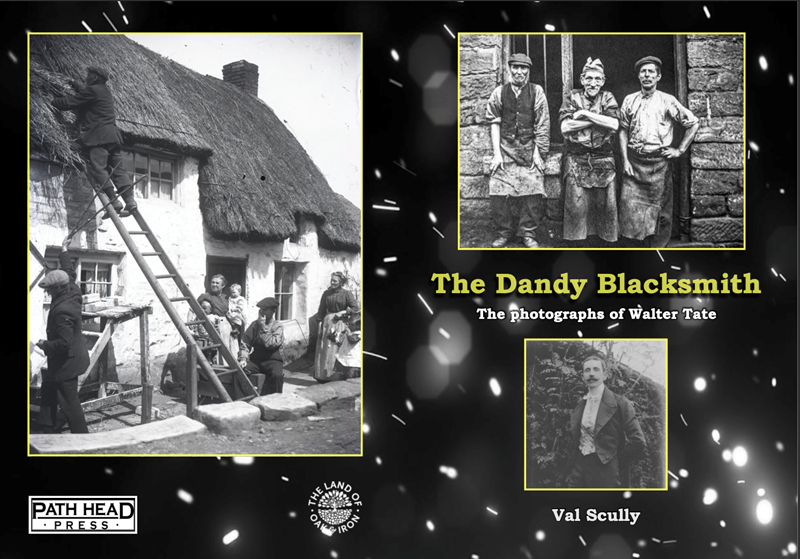The Dandy Blacksmith

The first time I heard the name Walter Tate was from John Boothroyd at a Ryton Local History Society meeting in 2023: he knew I was researching the Stella area for The Wheel of Time, so he told me that a member, Agnes Rickelton, had approached him for advice about her collection of Tate’s glass photographic plates and prints. Knowing that glass plate images degenerate and some of these were over a hundred and thirty years old, John arranged for them to be scanned at Gateshead Central Library, where the plates themselves could be kept in optimum conditions.
Some of the images that the scans revealed were already in circulation, notably the one of the Path Head thatcher on page 14, but the vast majority were new to us. They will, however, have been familiar to readers of the Newcastle Journal and Illustrated Chronicle between 1890 and 1939, because it turned out that Walter Tate had been their chief photographic reporter. Many places, such as Stella, Ryton, stretches of the Tyne and the Derwent, Winlaton Mill, Gibside, Durham, Newcastle, Rothbury were immediately identifiable; other less familiar locations could be identified by research, notably the castle where a young woman who looks like the late Queen Elizabeth is shown inspecting what looks like thousands of Girl Guides. (It’s Princess Mary, 1928, Lumley Castle.)
But what makes these photographs so appealing is the people whose faces smile out at us from the past: the farmers and their wives, the blacksmiths, miners, fishermen, top-hatted toffs, women whitewashing their cottages, gathering their crops, feeding their geese, sweeping their yards. And above all, the children! So many children, all laughing at this funny man with his camera and his waxed moustache and his charm. And yet he was a blacksmith! Many of the people he photographed will have known, particularly in the early days of his white-collar career, that Walter Tate was from Stella smithy, so he’s one of us.
Did the toffs he charmed, photographed and even befriended know his working-class origins? It doesn’t matter that we’ll never know: it lifts the heart to think that he rose on merit to mix with the moneyed and the titled.
Roughly five hundred original images have survived, and it’s all down to Agnes Watson, nee Brennan, who looked after Walter’s remaining sister, Aimee, and moved into the Grange with her family after Aimee’s death. The forge was abandoned by then, and apparently glass plates which had been stored there were being crushed underfoot or used for target practice! Agnes saved four hundred delicate glass slides and over a hundred prints, and passed them to her daughter, Agnes Rickelton, and the rest is history.
It's only been possible to select a representative sample of Walter’s surviving photos for this book, and a big thank-you to Alan Wainwright for enhancing them: you’re a star!